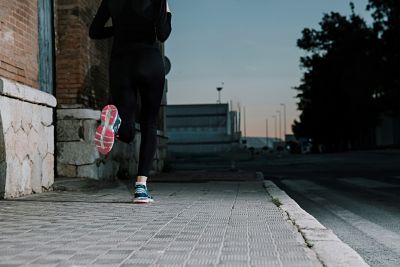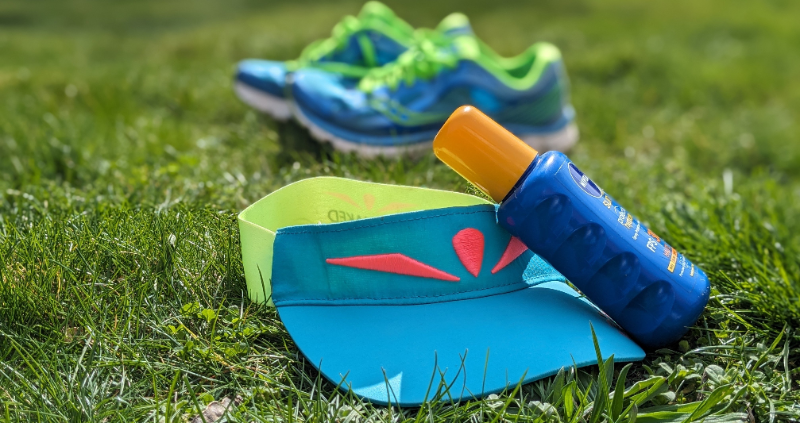Running during a Thunderstorm
 Running during a thunderstorm
Running during a thunderstormThe other day I got caught out and found myself running during a thunderstorm. One minute I was happily jogging around town and the next, the sky was dark and looming as it growled and spat at me. I could hear the loud rumbles in the distance and then suddenly there would be a clack of lightning which lit the sky. Believe me I was terrified.
My instinct was to get home as quickly as possible and to seek shelter as I went. Because I was on the edge of town it was a case of simply running from one shelter to the next. So first I found myself under a MacDonald's awning, then an abandoned shop entrance followed by a school bus shelter and then an avenue of big trees. The final part was me legging it as fast as I could, running from tree to tree.
I made it home safely but I was lucky. I had committed several errors and could have put my life in danger. The odds of getting struck by lightning are 1 in 13,500 but obviously the people with the highest risk are those that spend activity time outside and this includes runners. As a side note, Fishing is the most common outdoor activity for lightning deaths.
Thunder & Lightning
If you hear thunder then you know that lightning is around as thunder is a result of lightning. You can't have thunder and no lightning.
Lightning can be described as a giant spark of electricity in the atmosphere between either the clouds, the air, or the ground. Lightning can occur inside one cloud or pass from cloud to another but the most dangerous form of lightning is from cloud to ground.
Thunder is the noise that lightning makes. Lightning heats the air around it to excessive temperatures, thus causing the air to expand explosively fast. This rapide expansion then creates a shock wave which results in the booming sound of thunder.
Thunder and lightning usually occur at the same time but you usually see the flash of lightning before you hear the thunder, as light travels faster than sound.
How far away is the lightning?
Sound travels at about 1 mile for every 5 seconds. Count the seconds between the flash of lightning and the boom of thunder. If the time is 30 seconds then the lightning is 6 miles away. The rule of thumb is to seek shelter immediately if the seconds between the lightning and thunder is less than 30. Equally you should stay indoors until 30 minutes after the last boom of thunder. This is known as the 30/30 rule.
Golden Rules if you find yourself running during a thunderstorm
- The best thing to do is to GET TO A SAFE PLACE AS FAST AS YOU CAN.
- Lightning usually strikes the tallest object in its path as it is the easiest path for the lightning to take. Therefore, don't stand under a tall tree or lamppost. You would be better off seeking shelter from dense or low lying bushes.
- Run for shelter. Avoid shelters with concrete floors such as bus or picnic shelters or sheds, . Often they have steel or metal wires and bars inserted into them and these act as good conductors for the lightning.
- If you can get into a car, keep your hands on your lap and avoid touching anything that is connected to the car body framework such as steering wheel, window, dashboard and so on. Roll up the windows to seal yourself in.
- If it is raining, get out of the puddles as quickly as possible as water is a great conductor of electricity.
- If you are in a group running during a thunderstorm, then spread out. This stops a lightning strike getting you all.
- If you can't find shelter, then as a last resort get into the LIGHTNING SAFE POSITION. Crouch down and balance on the balls of your feet so as little of you is touching the ground as possible. Lightning can send a deadly electrical current across the top of the ground even when it is more than 100 feet away from you. Lower your head and cover your head and ears with your arms. Have your elbows resting on your knees so that if you get struck, then the lightning will hopefully pass through your limbs rather than your body.
First Aid if running during a thunderstorm
If someone gets struck by lightning, you need to act quickly. The victim will not be carrying an electrical charge so it will be safe to touch them.
- Call for emergency help immediately.
- If the person is not breathing, then give mouth to mouth resuscitation. If their heart has stopped beating then give CPR.
- Check for injuries. Usually the lightning enters the body in one place and exits in another. Look for signs of broken bones, skin wounds, vision and hearing damage. Perform first aid until help arrives



